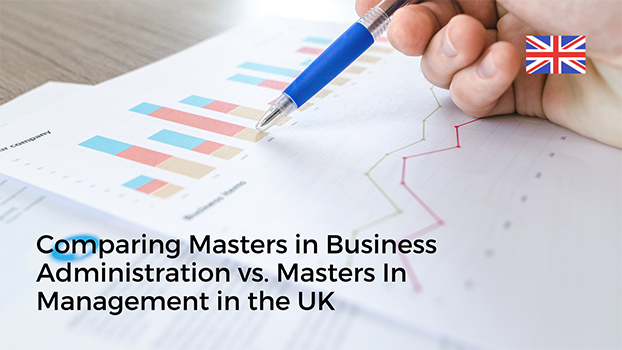Comparing Masters In Management vs MBA in UK – UniRely

MBA stands for Master’s in Business Administration, whereas an MIM stands for Master’s in Management. If you compare the two degrees closely, you will realize that they are not that far apart when it comes to the curriculum. However, it is the cohort, i.e. the diverse pool of candidates that make up your batch and class profile, that differs a lot, especially when pursuing an MBA in UK, where programs often attract experienced professionals from around the world.
First, I’ll talk about how they differ in the work experience required when applying
Work Experience Requirement
In an MBA degree, you will usually find a cohort with an average work experience of 5 years or so, whereas an MIM degree attracts students with less than 2 years of experience. An MIM allows fresh graduates to apply as well, whereas an MBA mandates at least 2 years of experience to be eligible to apply.
Now, I’ll talk about the GMAT score required for each.
GMAT score requirement
While the GMAT cut off an MBA for international students, especially Indians is relatively high for the better schools, the GMAT cut off for an MIM is relatively lesser. For example, the GMAT cutoff for an MIM in the UK’s London Business School is 680, whereas for MBA it is 710. Hence, an MBA not only requires a higher work experience but is more competitive.
Cost of the programs
The cost of the programme can be an important differentiating factor. Top MBA programs tend to be expensive, but on the other hand, the cost of studying MIM could be relatively low at the same University in comparison to the MBA. For example, The London Business School’s MBA fee for the 2019 intake was £82,000, which is roughly 78 lacs rupees whereas for the same intake the Masters in Management at LBS costs £32,500, which is roughly 31 lacs rupees)
Return on Investment and Job Prospects
As an MBA in UK attracts candidates with an already solid base in the working environment, the job prospects offered immediately after are mid-to-senior level positions whereas an MIM, primes you for an entry-level position. Those with MBAs will command a greater salary, in part, due to their previous work experience.
In such a scenario, which is the course that you should go for? Let us study this with an example.
Let’s say there are two students, one with 5 years of experience and 680 in the GMAT and the other student with 1.5 years of experience and a 710 in the GMAT. Although the second student has a higher GMAT score, s/he does not qualify for an MBA due to the lack of required work experience. On the other hand, the first student with 5 years of experience makes up for his slightly lower GMAT score, with a richer work experience and is therefore qualified to apply to all MBA programs. We must also consider the risk-taking appetite of the students. Let’s assume the first student is willing to wait and work for a few more years, then he may choose to opt for an MBA in UK. However, if she/he feels that an MIM now has a greater return on investment with respect to jobs and income earned immediately after degree completion, then he may choose to opt for an MIM instead.
If you are somebody with 3 years of experience and qualify for both, the best way to decide which one to go for is to assess your risk-taking appetite, speak to alumni and current students, do thorough research of which jobs you may qualify for after and what exactly you want from your degree, to understand which program suits you best.
Sign up at UniRely for free and learn about the entire application process. For more information about how to apply to universities abroad for your master’s degree, please visit our website – www.unirely.com.


